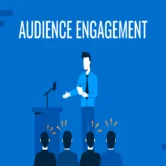
Describe the structure of an effective search ad
Introduction
An effective search ad is a compact, strategically crafted message designed to appear on search engine results pages (SERPs) when users enter relevant keywords. Unlike display ads, search ads target users with immediate intent, making their structure critical to visibility and performance. Google Ads and similar platforms offer ad formats composed of headlines, descriptions, and extensions that must work cohesively to attract clicks and drive conversions. The structure of a search ad plays a vital role in determining its quality score, ad rank, and user engagement. Crafting a strong search ad requires balancing clarity, relevance, and motivation to act—all within a limited character count.
Headline writing for maximum impact
Headlines are the first and most visible part of a search ad. Google allows up to three headlines, each up to 30 characters. These should include the primary keyword, unique value propositions, and a call-to-action when possible. The first headline typically features the main offer or keyword, while the second and third add supporting benefits or brand trust indicators. Effective headlines are clear, concise, and compelling, encouraging users to read further and consider clicking.
Description lines for supporting information
The description section allows advertisers to expand on the offer with up to two 90-character lines. This is where additional context, persuasive details, and urgency can be added. Descriptions should reinforce what was introduced in the headline and address potential questions or objections. Phrases such as “Free shipping,” “24/7 support,” or “Limited-time offer” can enhance appeal. Proper use of spacing, punctuation, and sentence structure improves readability and credibility.
Display URL for brand clarity
The display URL shows the user which website they’ll visit if they click the ad. While the actual URL might be longer, advertisers can customize the path (e.g., www.example.com/offer) to reflect the ad’s content. This element should include relevant keywords or product names to increase trust and reinforce alignment with the user’s search. A clean and descriptive display URL improves click-through rates and brand visibility.
Final URL for accurate landing
The final URL is the actual web address where users are directed after clicking the ad. It must be functional, fast-loading, and aligned with the promise in the ad copy. The landing page should deliver the exact offer mentioned in the ad—whether it’s a product, service, or information page. Consistency between the ad and the landing page improves the user experience and increases the likelihood of conversion.
Use of ad extensions for enhanced visibility
Ad extensions add more information to a search ad without additional cost. Common extensions include site links (to specific pages), callouts (highlighting benefits), structured snippets (product or service categories), call extensions (phone number), and location extensions. These elements improve ad prominence, provide more click options, and contribute to higher ad rank. Using relevant extensions helps deliver a richer user experience and supports better performance metrics.
Keyword relevance for search intent alignment
Keyword relevance is fundamental to ad structure. Ads should match the searcher’s intent by including target keywords in the headline, description, and display path. This alignment increases the quality score, a Google metric that affects ad position and cost-per-click. Keyword insertion features can dynamically insert search terms into the ad, enhancing relevance and engagement. High keyword alignment ensures that the ad speaks directly to what the user is seeking.
Call-to-action phrasing to drive engagement
Every effective search ad includes a clear and motivating call to action (CTA). Phrases like “Shop Now,” “Get a Quote,” “Download Free Guide,” or “Book Online” tell the user what to do next. The CTA should align with the user’s stage in the buying journey and offer a benefit. Placing the CTA in the headline or description increases visibility and encourages action. A strong CTA moves users from curiosity to conversion.
Optimizing for mobile responsiveness
Since a significant portion of search traffic comes from mobile devices, ads must be structured for mobile readability. Google automatically adjusts ad appearance for mobile, but writing short, punchy headlines and ensuring that landing pages are mobile-optimized enhances overall effectiveness. Use extensions like call buttons or map links that are especially useful for mobile users. Mobile-optimized ads load faster, offer easier navigation, and increase engagement.
Testing and performance monitoring for refinement
No search ad is perfect from the start. A/B testing different versions of headlines, descriptions, and CTAs is essential for performance improvement. Google Ads provides data on impressions, clicks, conversions, and CTR, allowing advertisers to refine and optimize ad elements. Testing various messages helps determine what resonates best with different audience segments. Continual monitoring and optimization ensure that the ad structure evolves with user behavior and market trends.
Conclusion
The structure of an effective search ad is a balance of precision, persuasion, and performance. From the headlines to the final URL, every component plays a role in attracting, informing, and converting potential customers. Clear messaging, keyword alignment, engaging CTAs, and strategic use of extensions all contribute to a strong ad that ranks well and delivers results. With continuous testing and optimization, advertisers can build high-performing search ads that connect meaningfully with users and support their digital marketing goals.
Hashtags
#searchads #googleads #ppcstrategy #adstructure #digitaladvertising #headlinewriting #adextensions #calltoaction #landingpageoptimization #adcopywriting #searchengineads #advertisingstrategy #qualityscore #searchmarketing #ppccampaigns #mobileads #adtesting #keywordrelevance #searchvisibility #clickthroughrate #semads #conversiondrivenads #ppcoptimization #adrank #paidsearch





